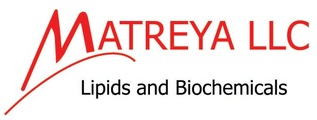Application Notes:
Methyl 10-methylhexadecanoate is a high purity methyl ester and is ideal as a MS or HPLC standard and for biological studies. It is a branched chain fatty acid methyl ester that is similar to the biologically important tuberculostearic acid which is two carbons longer. It is present in various bacteria and can be used as a biomarker for bacteria1 and it appears to increase in amount in bacteria as a function of age. Methyl 10-methylhexadecanoate is a typical membrane lipid for planctomycetes and occurs in high concentrations in anammox organisms2 and it has been found acylated to various phospholipids in bacteria.3
References:
1. N. Dowling, F. Widdel, and D. White “Phospholipid Ester-linked Fatty Acid Biomarkers of Acetate-oxidizing Sulphate-reducers and Other Sulphide-forming Bacteria” Journal of General Microbiology, vol. 132 pp. 1815-1825, 1986
2. C. Schubert et al. “Anaerobic ammonium oxidation in a tropical freshwater system (Lake Tanganyika)” Environmental Microbiology, vol. 8(10) pp. 1857-1863, 2006
3. H. Boumann et al. “Ladderane phospholipids in anammox bacteria comprise phosphocholine and phosphoethanolamine headgroups” FEMS Microbiology Letters, vol. 258(2) pp. 297-304, 2006






